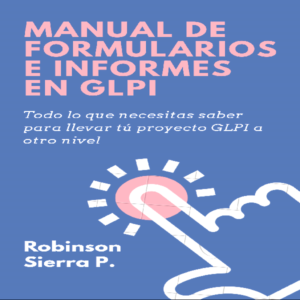This work is a chapter taken from The Orthodox Understanding of Salvation: "Theosis" in Scripture and Tradition (December, 2013).
Opening passage
“Without the Resurrection,” said a Staretz of our own age, “there is nothing!”
Truly. Unless Christ be risen from the dead, unless the tomb of the Lord were found “empty”, the Christian kerygma would indeed be useless. As St Paul puts it: “If Christ be not raised, your faith is vain” (1 Cor. 15:17).
But why do the saints speak about the Resurrection in such uncompromising terms? Quite simply, because if the Resurrection of Christ is merely a beautiful metaphor, “then they also which are fallen asleep in Christ are perished”, and “we are of all men most miserable” (1 Cor. 15:18–19), for nothing but death and corruption – nothing but non-being – would await us.
Christians, however, know that Christ is risen; and they know that His Resurrection signifies our resurrection, and so together with St Paul they affirm that “now is Christ risen from the dead, and become the firstfruits of them that slept… For as in Adam all die, even so in Christ shall all be made alive” (1 Cor. 15:20–22). The Resurrection of Christ the New Adam, then, is a foreshowing of our own resurrection, of our intended place in the Kingdom of Heaven.
However, within the mystery of Christ’s glorious Resurrection is also contained the mystery of the way in which we have been called to share in the very Life of God the Holy Trinity; and it is here that we arrive at the fundamental doctrine of the Church concerning the resurrection of the body.
Put simply, the whole of our humanity – body as well as soul – has been called to live eternally with God. This is the significance of the salvific work of Christ: that by His Incarnation, Crucifixion, Resurrection and Ascension, Christ has raised human nature to the right hand of God the Father, to the level of Divine Being.
Significantly, the only human person, the only human hypostasis thus far to have achieved this blessed state is, of course, the Most Holy Mother of God and Ever-Virgin Mary, through whom the Son and Word of God became flesh.
I say “significantly”, because in our attempt to look a little more closely at the question of the resurrection of the body, I have chosen to turn briefly to St Cyril, Pope and Patriarch of Alexandria (d. 444), for it was he who first defended the Holy Virgin as Theotokos (Birthgiver or Mother of God) against the Nestorians – those who falsely taught that Christ was merely a man in whom the divine Logos dwelt. It is no coincidence, then, that references to the subject of our inquiry abound in St Cyril of Alexandria, for the theme of the resurrection of the human flesh of Christ is inextricably intertwined with our appreciation of the Holy Virgin as Theotokos…"
Opening passage
“Without the Resurrection,” said a Staretz of our own age, “there is nothing!”
Truly. Unless Christ be risen from the dead, unless the tomb of the Lord were found “empty”, the Christian kerygma would indeed be useless. As St Paul puts it: “If Christ be not raised, your faith is vain” (1 Cor. 15:17).
But why do the saints speak about the Resurrection in such uncompromising terms? Quite simply, because if the Resurrection of Christ is merely a beautiful metaphor, “then they also which are fallen asleep in Christ are perished”, and “we are of all men most miserable” (1 Cor. 15:18–19), for nothing but death and corruption – nothing but non-being – would await us.
Christians, however, know that Christ is risen; and they know that His Resurrection signifies our resurrection, and so together with St Paul they affirm that “now is Christ risen from the dead, and become the firstfruits of them that slept… For as in Adam all die, even so in Christ shall all be made alive” (1 Cor. 15:20–22). The Resurrection of Christ the New Adam, then, is a foreshowing of our own resurrection, of our intended place in the Kingdom of Heaven.
However, within the mystery of Christ’s glorious Resurrection is also contained the mystery of the way in which we have been called to share in the very Life of God the Holy Trinity; and it is here that we arrive at the fundamental doctrine of the Church concerning the resurrection of the body.
Put simply, the whole of our humanity – body as well as soul – has been called to live eternally with God. This is the significance of the salvific work of Christ: that by His Incarnation, Crucifixion, Resurrection and Ascension, Christ has raised human nature to the right hand of God the Father, to the level of Divine Being.
Significantly, the only human person, the only human hypostasis thus far to have achieved this blessed state is, of course, the Most Holy Mother of God and Ever-Virgin Mary, through whom the Son and Word of God became flesh.
I say “significantly”, because in our attempt to look a little more closely at the question of the resurrection of the body, I have chosen to turn briefly to St Cyril, Pope and Patriarch of Alexandria (d. 444), for it was he who first defended the Holy Virgin as Theotokos (Birthgiver or Mother of God) against the Nestorians – those who falsely taught that Christ was merely a man in whom the divine Logos dwelt. It is no coincidence, then, that references to the subject of our inquiry abound in St Cyril of Alexandria, for the theme of the resurrection of the human flesh of Christ is inextricably intertwined with our appreciation of the Holy Virgin as Theotokos…"












